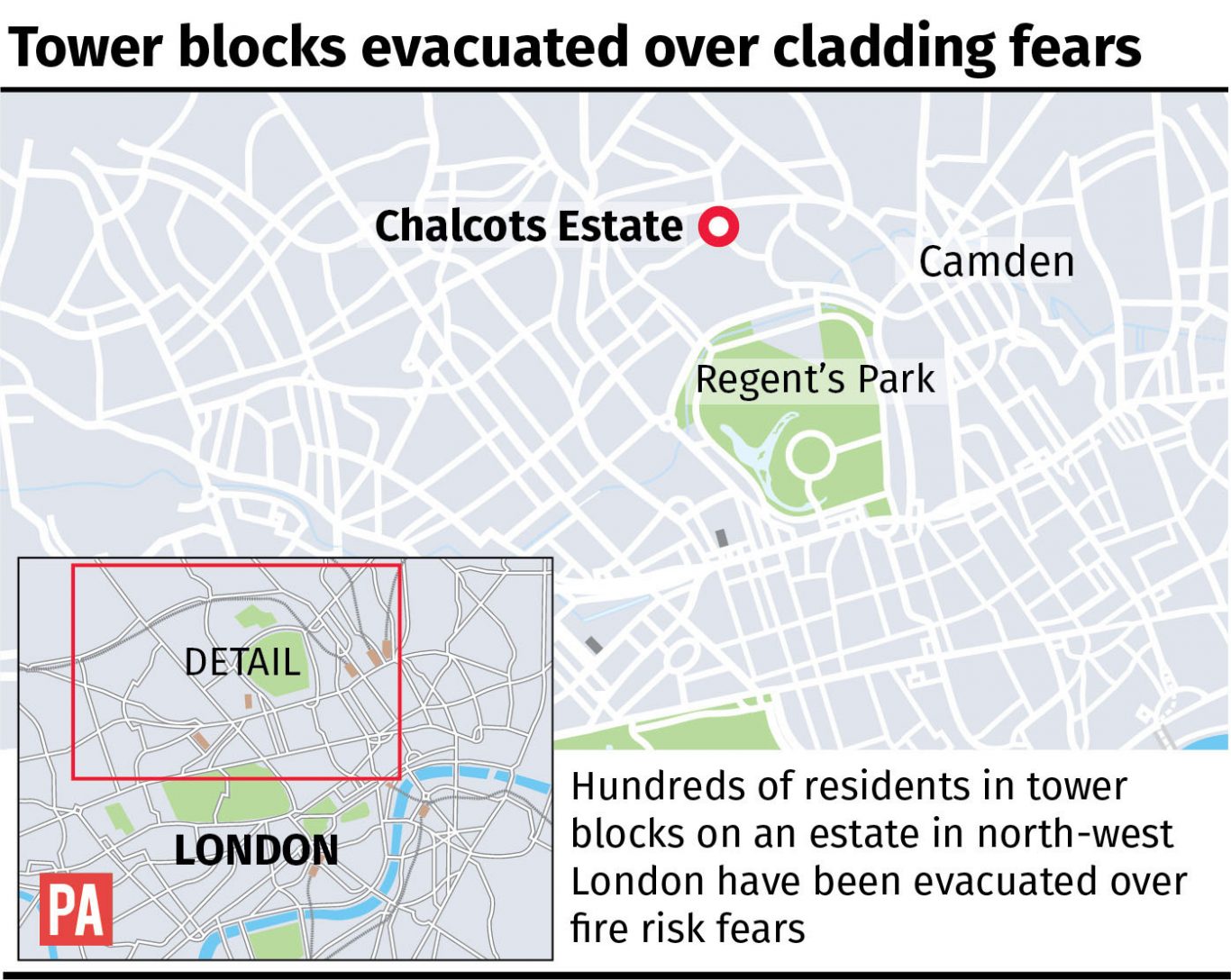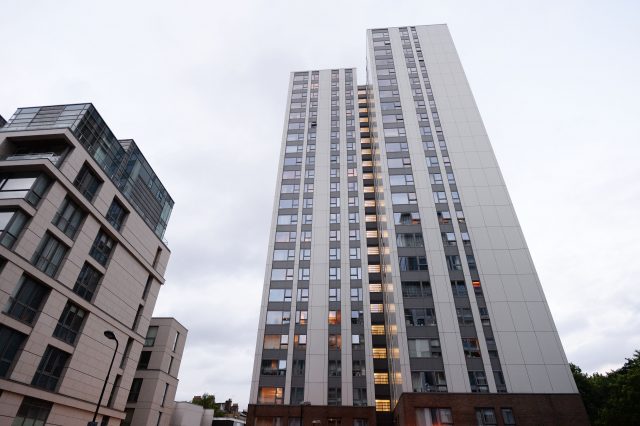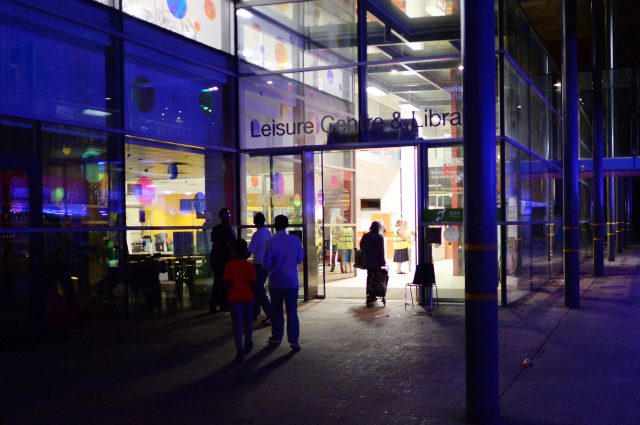
Some 34 high-rise buildings in 17 local authorities across the country have failed fire cladding safety tests in the wake of the Grenfell Tower disaster, the Government has said.
The announcement came as around 3,000 residents of the Chalcots Estate in Camden, north London, face weeks in temporary accommodation after four tower blocks were evacuated.
Communities Secretary Sajid Javid said testing of potentially combustible cladding “is running around the clock”.
“So far the cladding from 34 high-rise buildings, in 17 local authority areas, has failed the combustibility test,” he added.
Manchester, Camden, Plymouth, Hounslow, Portsmouth, Barnet and Brent were named as having buildings that had failed tests by Mr Javid.
But in the statement he stressed “cladding itself is not dangerous” and that a failure in testing does not necessarily mean a building will be evacuated.
“The decision by Camden Council to evacuate four of the five towers on the Chalcots Estate was because the failed testing of the external cladding was compounded by multiple other fire safety failures which the fire inspection team found within the buildings,” he said.

Mr Javid praised the “calm and stoicism” which residents showed when asked to leave their homes at short notice on Friday, in what he called a “distressing experience”.
Camden Council leader Georgia Gould said the authority took the “extraordinary action” to clear 600 flats because “we are really clear that those four blocks are not safe”.
Baby supplies for Swiss Cottage rest centre! ???? ???? ???? pic.twitter.com/ofpzctscRe
— Camden Council (@camdentalking) June 24, 2017
London Fire Brigade inspecting officers identified concerns over the combination of external cladding, fire doors, gas pipes and insulation, she added.
But despite being urged to leave by officials, around 20 households had refused to vacate their homes, in Taplow, Burnham, Bray and Dorney, by Saturday evening.
Ms Gould said: “There are various legal routes that Camden Council could explore to require people to leave their homes, however, we really don’t want to do this.”
Message from Bob O'Toole, Chair of the Chalcots Estate Tenants and Residents Association, re #chalcots pic.twitter.com/Z7BViMoJyy
— Camden Council (@camdentalking) June 24, 2017
The council said it could take two to four weeks for the four blocks to be made safe.
Mother-of-six Najmon Adam, who has lived in Bray for 12 years, said she would remain in her property until the council found accommodation in the borough for her family.
The 36-year-old, whose children are aged between five and 15, told the Press Association: “I have a little one who is sick, she has diabetes, she needs insulin, and I can’t take her to the leisure centre.

“The schools are just here, I have to go to the school, get her packed lunch ready and take her the insulin.
“How am I going to do that if I am somewhere far?”
Ms Gould committed £100,000 of council funds to pay for food and essential items displaced residents may need, with the council having spent £500,000 on hotel rooms for residents.

Work had been due to begin on stripping cladding from buildings on the Chalcots Estate, but Camden Council ordered the “decant” of residents on Friday evening.
More than 100 people stayed in the Swiss Cottage Leisure Centre overnight, while the council promised to reimburse those who had paid for their own hotels.
Refurbishment of the Chalcots Estate was overseen by Rydon, the company involved in the refit of Grenfell Tower, according to the Rydon website.
Council Leader Georgia Gould has committed £100,000 of council funds to pay for evacuated residents' food and essential items they may need.
— Camden Council (@camdentalking) June 24, 2017
The site said the Chalcots project was a £66 million refurbishment which lasted 191 weeks.
The work included external thermal rain screen cladding on five towers, new aluminium thermally broken windows on five towers, and an overhaul of external roofs.
It added that 711 flats were modernised with new wiring, heating, kitchens and bathrooms.


Comments: Our rules
We want our comments to be a lively and valuable part of our community - a place where readers can debate and engage with the most important local issues. The ability to comment on our stories is a privilege, not a right, however, and that privilege may be withdrawn if it is abused or misused.
Please report any comments that break our rules.
Read the rules hereLast Updated:
Report this comment Cancel